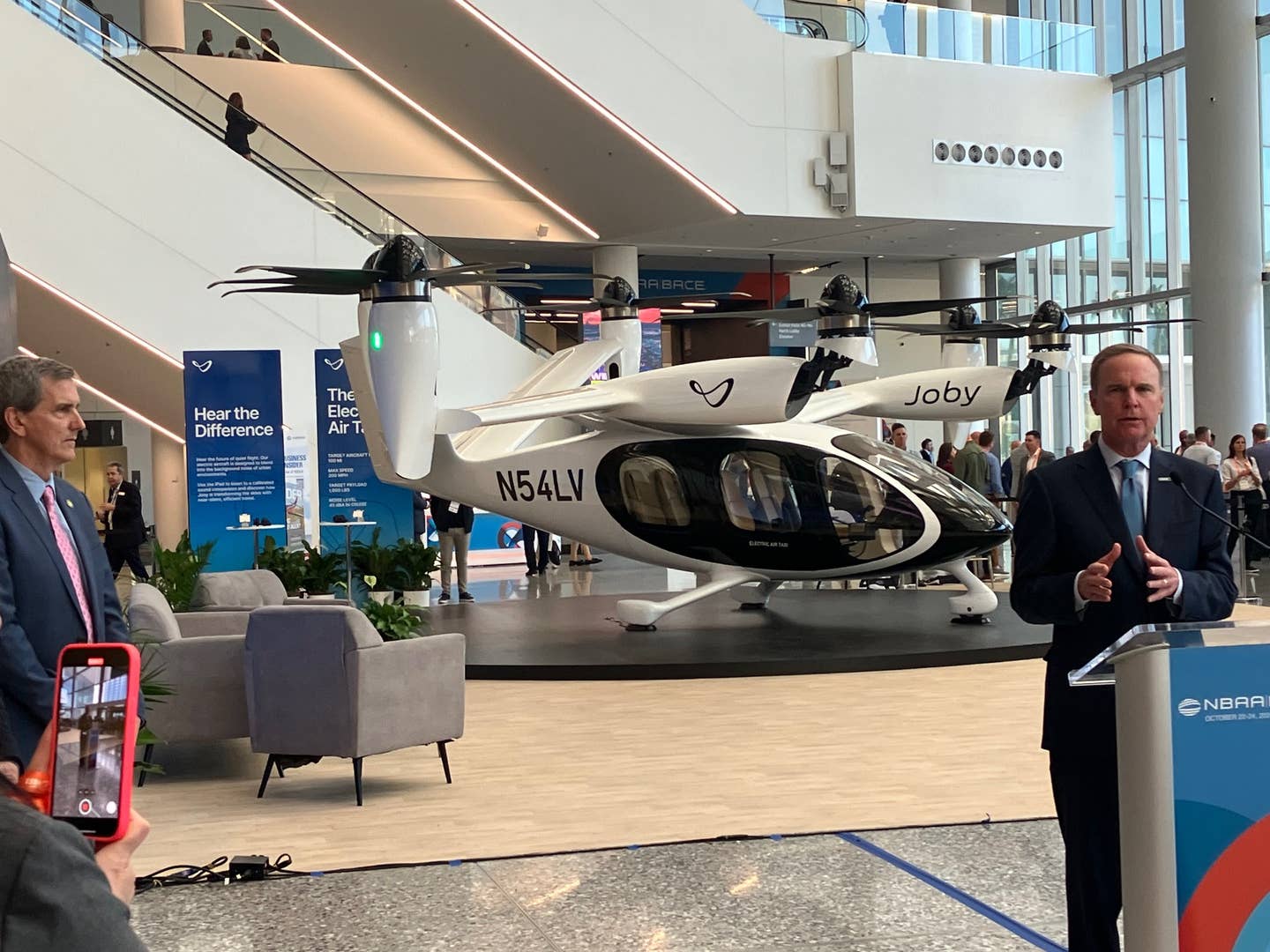New Powered Lift Final Rule Announced
New rules for advanced air mobility aircraft were announced on Tuesday at NBAA-BACE in Las Vegas.

High-time ATPs and IFR rated commercial pilots will likely be the first to train as eVTOL line pilots as the industry moves toward revenue service under a broad set of rules and regulations announced Tuesday. With a mockup of Joby's multi-copter tilt wing air taxi as a backdrop, FAA Administrator Mike Whitaker signed into effect a new Special Federal Air Regulation (SFAR) that includes 880 pages of regulatory underpinning for a new powered-lift category in a ceremony at NBAA-BACE in Las Vegas.
“The FAA will continue to prioritize the safety of our system as we work to seamlessly integrate innovative technology and operations. This final rule provides the necessary framework to allow powered lift aircraft to safely operate in our airspace,” said Whitaker. “Powered lift aircraft are the first new category of aircraft in nearly 80 years and this historic rule will pave the way for accommodating wide-scale Advanced Air Mobility (AAM) operations in the future.”
There were numerous curveballs in creating rules to govern the wide assortment of aircraft that will be regulated under the new rules, including the FAA's abrupt turn from including the aircraft under Part 23 and putting them in the Part 21 Special Use Vehicle category, which necessitated the draftine of a whole new set of rules. Congress gave the FAA until the end of this year to get them written. That it made the deadline was applauded by other speakers at the ceremony. The agency says the new document, which, in addition to creating the SFAR amends a host of existing regs, is a start. It expects changes will be made as the novel aircraft with their equally novel operating and performance characteristics expand in number and scope of operations. Each one will require a type rating after certification so the new rules spend a lot of pixels on pilot training.
Since the only people who have operated these aircraft to date, either in the air or on the ground, are company test pilots, the rule says it follows that they will become the first instructors for a new generation of pilots. Their students will be among the fixed and rotary wing industries' most experienced and some of them will likely be the next cadre of instructors.
Some of the aircraft have only single controls so new rules have been written to allow their use under certain conditions, chief among them the instructor's ability to intervene quickly when necessary. Certain performance parameters have also been relaxed, including the adoption of helicopter energy reserves for those that can land vertically.
Manufacturers and aviation groups kept their public reaction to the new rules general as their legal and technical staff dive into the huge document, but initial comments were generally positive. "The regulation published today will ensure the U.S. continues to play a global leadership role in the development and adoption of clean flight,” said JoeBen Bevirt, Founder and CEO of Joby. “Delivering the rules ahead of schedule is testament to the dedication, coordination and hard work of the rulemaking team,” he added.
NBAA said the new rule is fundamental to the U.S. maintaining its status as leader in aviation innovation and safety. “Advanced air mobility promises to change the very definition of on-demand aviation worldwide,” President and CEO Ed Bolen said. “Given the speed at which the technology is developing, it is critical that all stakeholders have clear, official guidance for AAM operations. We commend the FAA for providing that guidance with the publication of this new rule.”
“Industry stakeholders have long been anticipating the release of the SFAR as it will have a substantial impact on enabling initial electric vertical takeoff and landing (eVTOL) powered-lift operations and the overall trajectory of the advanced air mobility sector," said General Aviation Manufacturers Association President Pete Bunce. "We will work with our membership to evaluate the SFAR policies fully and examine how our collective, thorough safety-based comments, that were provided last year following the release of the Notice of Proposed Rulemaking, were incorporated into the final rule."






